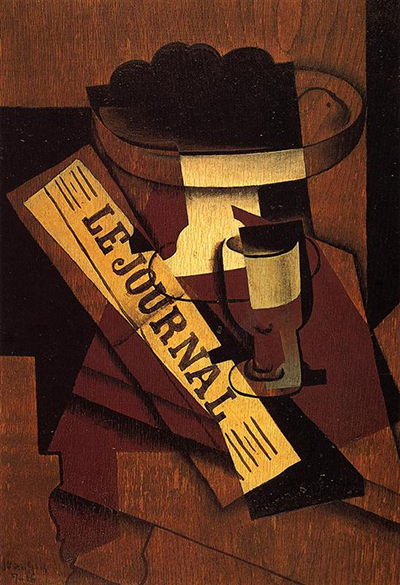This darkly lit painting from Cubist Gris was finished in 1916 and is now a part of a private collection.
The famous French newspaper, Le Journal, takes centrestage in this carefully laid out piece. Newspapers are found in many of this artist's still life works, but he also used others such as Le Figaro too. There is a glass placed to the right of the newspaper, creating a early morning setting where a traditional gentleman might make his plans for the day. There is also a small dish which appears to contain grapes, but the cubist approach means that some elements can sometimes be hard to identify. There are a few touches of white, perhaps gouache, but the majority of this scene is completed in tones of brown, with some black to produce shadows.
There is a wood effect on the background elements to this scene and Gris found several different ways of achieving this, some of which were most labour intensive than others. Georges Braque would develop a technique of including printed extracts into his paintings which inspired Gris and led to him experimenting with these ideas for several years himself. The dark palette is also perhaps in line more with some of Braque's paintings, as typically Gris preferred to use a brighter, bolder look in his paintings that suited someone who had come from a professional illustration position. He considered the public and how they would understand and connect with his work, but in this case he chose a relatively sombre look instead.
Gris was unusual in that he was truly Spanish but actually felt more French. He would ask friends to call him Jean and he immersed himself entirely in French culture having arrived from Madrid as a young man. He would spend most of his adult life here and achieved a similar connection to the nation as did another Spaniard - Pablo Picasso. At the time there was a huge hub of creative sparks to be found in certain parts of Paris and these attracted some of the finest modern-thinking painters and sculptors from right across Europe.




